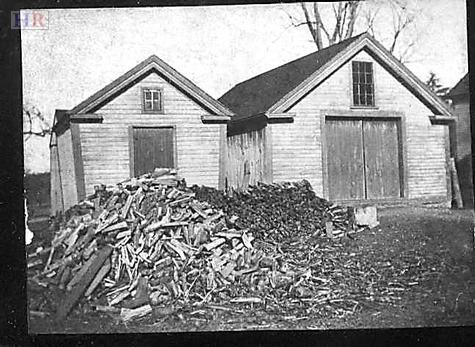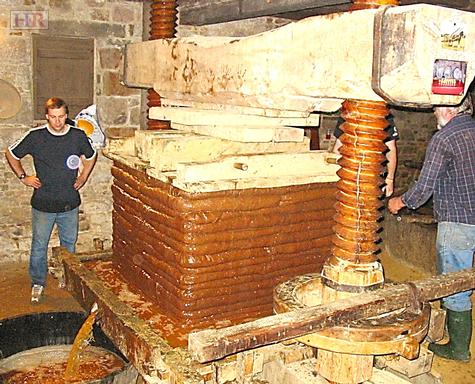Hard Cider
In the nineteenth century “hard” cider was a familiar libation. Unlike what we know as “cider” today, it was a fermented alcoholic beverage made from fruit juice, most commonly and traditionally apple juice, but also the juice of peaches, pears ("Perry" cider) or other fruit, the alcohol content being from 1.2% ABV to 8.5% or more, slightly less than beer. Cider was made from any variety of apple, but certain cultivars grown solely for making cider were known as “cider apples”.
According to OSV curator Tom Kelleher[2] “A typical farm might produce about ten barrels (well over 300 gallons) a year of this mildly alcoholic beverage.” Henry Bullard made cider all fall, until he had to close the mill due to cold weather.
Dennis Picard [3] wrote, “The cider that was so much a part of a rural family's diet would not merely be the apple juice but in reality, the fermented squeezings from apples. It was very important as alcohol was the preservative. The 4% to 8% alcohol is what would allow the cider to keep from the time just after it was made through the spring planting, summer heat and into the harvesting in the next apple season. Usually a town would have four or five farmers at a time who would have made the investment of time, labor, and money in building and maintaining a cider mill…”

Front view of the Bullard’s cider mill as it appeared in the early 20th century.
Henry Bullard’s two-story cider mill was built into the hill, next to the farmhouse. The top ground-level sliding doors in the front of the building opened on the fruit grinder or nut mill consisting of two large wood cylinders eight, ten, or more inches in diameter, one with teeth or projections and the other with cavities or mortises that corresponded and meshed with the teeth.
A small space was maintained between the two cylinders through which the apples passed and were crushed. The cylinders were powered by a wooden drive gear which in turn was driven by a horse-powered treadmill.

Horsepower; from the 1876 Ames Plow Company Catalog.

Rear view of the Bullard’s cider mill, as it appeared in the early 20th century.
The crushed apples were piled in layers with straw or cloth or some other type of sieve to remove solids, in between the layers, on the base of the press. This pile was called a cheese which would then be squeezed by the pressure created by tightening the screws on a beam placed across the top of the cheese.

A recent photograph of a still-operating cider press showing the “cheese” being pressed and the juice collected below; the Bullard’s cider press was about two-thirds as large as this one. Pressing apples for cider; taken at La Faîs'sie d'Cidre, Hamptonne, Jersey 22 October 2006. Wikipedia.
Neighborhood children, drawn to the sweet scent of apple pomace came to sip fresh juice pressed at the mill. Henry’s own children were sometimes compelled into service. Someone needed to poke at the apples to keep them from jamming in the grinder or to prod the horse to keep the grinder turning -- perfect jobs for children.
After the juice was pressed and filtered, it was barreled and allowed to sit while the yeasts that were present in the juice would start to feed on the sugars (and make alcohol as a by-product) and the juice would foam and fizzle and hiss. When the hissing stopped, the juice had become what everyone at the time recognized as cider.
The liquid was drawn off or decanted into clean barrels and sometimes combined with “extras” like brandy or rum to raise the level of alcohol or charcoal or sand to keep the cider from spoiling. The original barrels, still full of yeast, would be used again for the next pressing.
[1] Alcohol By Volume.
[2] Agricultural Interpretation at Old Sturbridge Village, 2002, A Summary; Tom Kelleher; Old Sturbridge Village Research Paper. 2002.
[3] A Short Note on Cider Making in 19th Century New England and the Lyford-Hutchins Mill; Dennis D. Picard; OSV Research Paper.
© 2013 Martha DeWolf
I love reading your stories, Martha.
Louise | 2013-10-06 12:19:08
This is interesting. We lost this tradition because of Prohibition I'm sure. Especially since afterwards age limits were imposed on the consumption of any alcohol removing hard cider from the use of families to a large extent especially as we urbanized. It's too bad.
Andrew Mades | 2013-10-06 11:44:04